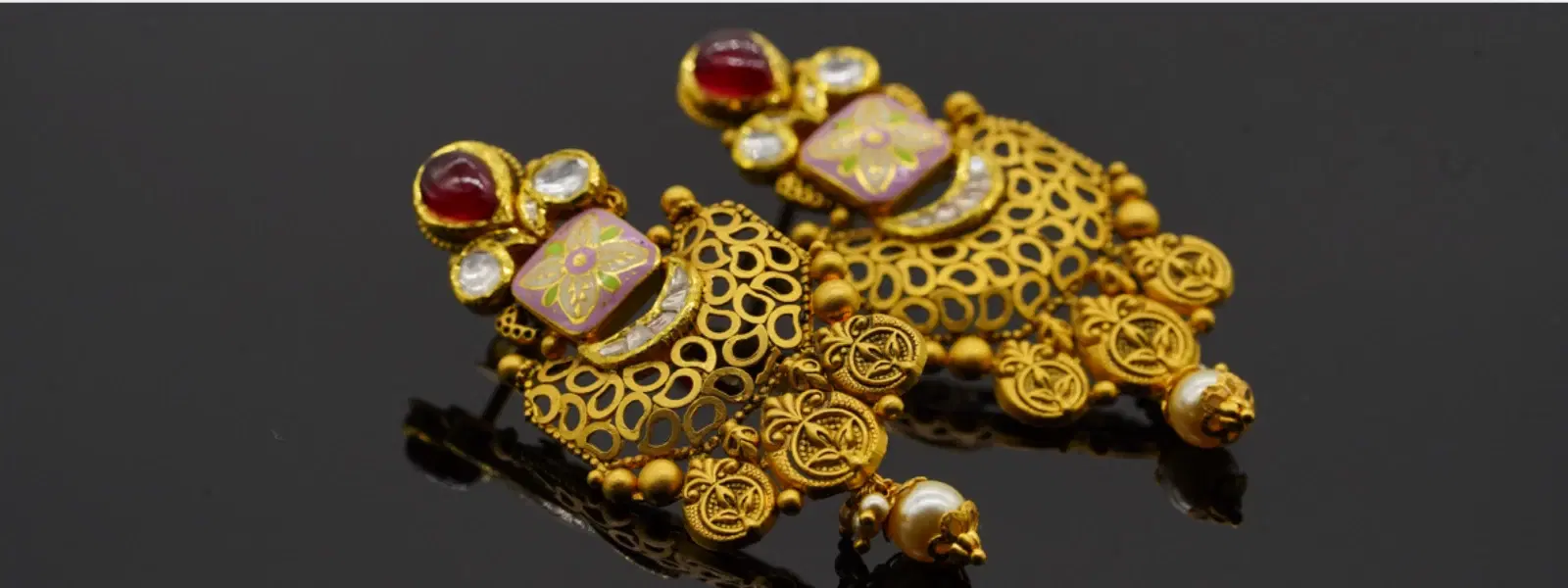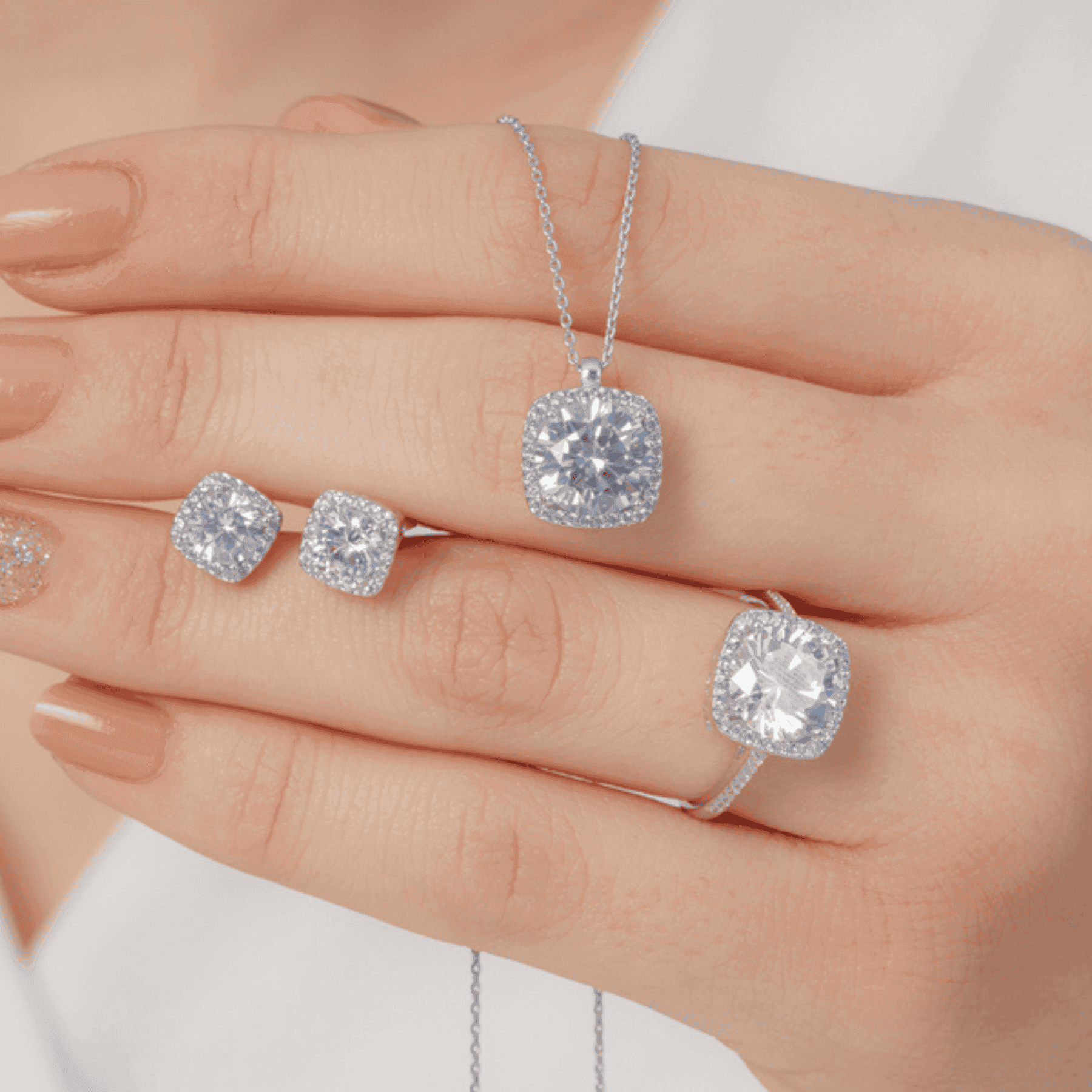
Watches & Jewellery
•04 min read

Indian earrings have long been celebrated for their artistic legacy and deep cultural roots. This blog post explores the differences between indian earrings and traditional earrings, helping you understand their unique features, intricate designs, and the rich heritage they represent. By the end of this post, you'll gain insights into how these two styles of ethnic jewellery differ and the ways in which they can enhance your look for various occasions.
Indian earrings are steeped in tradition, often associated with rituals, celebrations, and bridal wear. These pieces carry a symbolic meaning that extends beyond aesthetics. From elaborate gold earrings to delicate silver earrings, every design tells a story. They are often crafted using precious materials like gold, silver, and kundan elements. Regional styles such as South Indian temple earrings, Rajasthani kundan earrings, and Bengali gold earrings each add a distinct flavor to this rich tapestry of heritage.
Indian earrings come in many stunning forms. Some popular designs include:
Jhumka Earrings: Bell-shaped designs, often adorned with gemstones and intricate carvings.
Chandbalis: Moon-shaped earrings, cherished especially in bridal jewellery.
Kundan Earrings: Renowned for their regal look with gemstone detailing.
Dangling Earrings: Long, flowing designs that bring grace to festive occasions.
These designs are a beautiful blend of tradition and art, making them a favorite choice for enhancing ethnic wear and expressing personal style with flair.
Traditional earrings serve as a reflection of the cultural heritage of various regions around the world. They embody the customs, rituals, and artistic expressions of their origins. For instance, you may find designs inspired by Celtic knots, Native American beadwork, or African tribal motifs. These earrings are crafted with care, celebrating their unique origins and serving as an expression of identity.
Typically, traditional earrings use materials that are locally sourced and crafted. Examples include sterling silver, natural wood, beads, and stones. The styles range from minimalist stud earrings that offer subtle elegance to bold statement jewellery that stands out in any setting. Handmade earrings and designer earrings alike capture the essence of traditional craftsmanship while appealing to diverse tastes.

Each pair of traditional earrings tells its own story. The design motifs, colors, and materials used often have deep roots in cultural practices. Whether it's the symbolism behind Native American beaded earrings or African tribal designs, traditional earrings are a testament to timeless heritage and artistic expression.
Both indian earrings and traditional earrings showcase unique materials and techniques. Indian earrings frequently feature precious materials such as gold, kundan, and silver. Their designs emphasize intricate detailing and motifs like peacocks, lotus flowers, or divine figures. Traditional earrings, on the other hand, may use natural woods, beads, or sterling silver, reflecting regional artisanal practices and cultural symbols.
Design plays a major role in distinguishing these two jewellery categories. Indian earrings are known for their bold, ornate designs that shine during festive and formal events. They are often characterized by elaborate patterns that are perfect for pairing with ethnic wear. Traditional earrings comprise a range of styles – from subtle stud earrings that suit everyday casual wear to bold statement jewellery that can elevate any look.
When choosing earrings, considering the occasion is essential. Indian earrings are traditionally worn at weddings, festivals, and ceremonial events due to their opulent design. Traditional earrings offer flexibility in style and can be effortlessly paired with both casual and formal outfits. Whether you opt for handmade earrings or sleek designer earrings, the choice often depends on personal taste and the event at hand.
Choosing between indian earrings and traditional earrings involves thinking about your occasion, outfit pairing, and personal taste. For festive or wedding events, bold designs like dourbling gold earrings or intricate kundan earrings can be an eye-catching match to your ethnic wardrobe. For everyday elegance, simple stud earrings or delicate dangling earrings offer a subtle yet stylish look. Consider the material and how it complements your skin tone—gold earrings often enhance warmer tones while silver earrings suit cooler complexions.
Expert Tip: Gold earrings tend to flatter warmer skin tones, while silver earrings highlight cooler hues. Kundan earrings with multicolored gemstones are a versatile pick that blends well with any skin type.

Indian earrings have seen a remarkable evolution from purely traditional designs to modern reinterpretations that blend ethnic motifs with contemporary aesthetics. Today, designer earrings incorporate elements like diamonds and minimalistic patterns while retaining the heritage and craftsmanship of classic indian earrings. This evolution allows them to fit seamlessly into modern fashion, proving that tradition and innovation can indeed go hand in hand.
Jhumkas, chandbalis, kundan earrings, and dangling earrings are celebrated for their intricate designs and cultural significance.
Indian earrings are known for their ornate designs made from materials like gold, kundan, and silver, while traditional earrings vary from region to region, often using natural materials like wood, beads, and sterling silver.
While many designs, such as stud earrings or smaller dangling earrings, can be worn casually, most are crafted for special festive or formal occasions.
Traditional earrings often feature naturally sourced materials such as wood, beads, sterling silver, and stones, depending on cultural heritage.
Yes, statement jewellery like chandbalis or kundan earrings adds a unique touch to Western ensembles, blending ethnic charm with modern style.
Both indian earrings and traditional earrings have their own charm and significance. Indian earrings dazzle with their elaborate craftsmanship and rich heritage, while traditional earrings celebrate regional artistry and cultural diversity. By understanding these differences, you can confidently choose the perfect pair to express your unique style. Embrace the beauty of ethnic jewellery as a celebration of self-expression, and explore various designs that resonate with your personal style and the moment you wish to adorn.